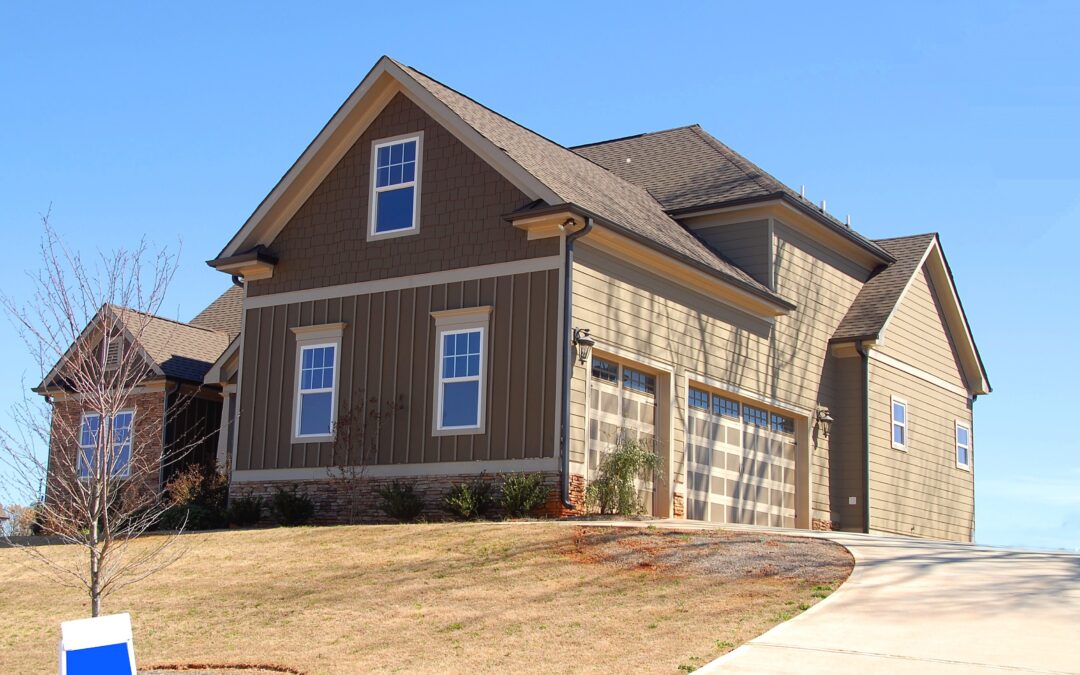How much money should you save before buying a house?
A down payment of 20% and six months worth of what your expenses will be once you own the home.
Here’s what I’ll cover in the remainder of this post
- Why you should save that much
- The cost of making a bad decision
- Guidelines for how much house to buy
- Putting your plan together
Why you should save that much
I want you to be happy. I want you to be financially successful. I want you to have the life of your dreams. Therefore, I want you to make the right decision on what could be the biggest purchase you’ll ever make. That’s my motivation for writing this.
There is a lot of information available to us, and most everyone has an opinion about real estate. It’s my goal to help you cut through all of it and to share the wisdom I’ve picked up over the years as well as my 20 plus years as a financial advisor.
It’s also important to know that my approach won’t be easy.
A $0 down payment is a lot easier than a 20% down payment. In the short-term.
Over the long-term, the approach I advocate will be far better for you. So stay with me.
Why a 20% down payment, can’t I do it for a lot less? Yes, there are programs that require smaller down payments, but that’s not the whole story. When deciding which loan program is right for you, it’s important to weigh all the costs, not simply the down payment.
It’s important to understand the concept of basis points, which is how banks and financial institutions make money. 1% equals 100 basis points (kind of like how $1 is 100 cents). When evaluating different loan options and large numbers, we can sometimes lose sight of how small amounts can become big amounts over time.
Programs which require smaller down payments often have higher expenses (more basis points) over the entire life of the loan. For example, if you choose to go with an FHA mortgage instead of a conventional mortgage, you’ll pay 1.75% at closing and up to an additional 1.05% every year.
Odds are, you’ll also have to buy Private Mortgage Insurance (PMI) which can be up to 2% every year.
Again, these small amounts add up to big amounts over time. Putting 20% down allows you to avoid many (if not all) of these costs. It also means you’ll pay a lot less interest because you’ll have a smaller loan amount. Your payment will also be a lot less.
Let’s assume you buy a $200,000 home with a 15 year mortgage and a 4% interest rate; here’s the differences.
| Down payment | 20% | 3% |
| Loan amount | $160,000 | $194,000 |
| Private mortgage insurance | $0 | $160 |
| Mortgage payment | $1,200 | $1,600 |
| Total interest paid | $53,000 | $64,000 |
The private mortgage insurance (PMI) alone is $1,920 a year, and the difference in the yearly mortgage payment is $4,800.
This simple example is also not factoring in additional basis points which would be added to the cost of the loan if you’re putting down less than 20%.
Bottom line; making a 20% down payment makes financial sense. I’ll go deeper into the total costs of home ownership in the next section.
Why six months? I told you I wanted you to be financially successful. The only way to achieve financial prosperity is to first have financial security. Six months of expenses provides that.
Six months is a fully funded emergency fund which is there in case you need it and will be enough to absorb most of the common problems life throws at us.
Please keep in mind I’m not talking about your current expenses. I’m talking about what your expenses will be once you own the home. This will be included in the planning process later.
The cost of making a bad decision
Have you ever heard the expression “house poor?” It simply means someone bought a house that was too expensive and it’s consuming all of their money.
I don’t want you to be house poor.
Are you at risk of falling into this trap? If you opt for a lower down payment and don’t have six months worth of expenses saved, I believe you are.
Buying a house is the largest purchase most of us will ever make and it’s an important one. We do it in partnership with banks who lend us money. Commonly, the term is 30 years and sometimes 15 years. That’s a really long time.
If you make a bad decision and become “house poor,” that bad decision will haunt you for a long time.
It can prevent you from doing other important things such as saving for retirement, helping kids with college, and can even stop you from taking vacations.
We all have a finite amount of money. When we allocate it to one place, it means we can’t put it to work somewhere else. That’s known as opportunity cost.
Why do I bring this up? Because the people selling crappy mortgage programs want you to buy from them. They entice you with talk of zero down payments and low rates, but don’t tell you about the fees and expenses that I talked about earlier. They also don’t tell you about opportunity cost.
The reality is this; if you can’t save up a 20% down payment and emergency fund, you can’t afford to buy a house.
Guidelines for how much house to buy
All too often, we only think about the cost of a home in terms of the mortgage payment. It’s really important to understand the total cost of home ownership so you can make an informed decision about how to move forward. Spoiler alert, it’s going to be more than you think.
Total cost of home ownership
- Mortgage payment. You’ll know what this will be as you go through the process. If you’d like to speak with someone, you can get in touch here.
- Homeowner’s insurance. If you’d like to speak with someone, you can get in touch here.
- Property tax. You’ll know what this will be and can find out what it is in your state.
- HOA fees. This will be an important factor in your home buying process.
- Utilities. You’ll be able to estimate what these will be when you’re looking at homes.
- Maintenance and repairs. Landscaping, cleaning, pool service, air conditioning, pest control; the list goes on. Basic and recurring services can be estimated. Major problems like an AC unit breaking, roof leak or electrical problem can be very expensive. These are some of the reasons an emergency fund is so important.
The 28% rule. This rule tells us a household shouldn’t spend more than 28% of it’s gross monthly income on housing expenses. Gross monthly income means pre-tax and pre employee benefits. So, add those deductions back into your paycheck and that’s the number to work with. Determine the total cost of the home you’re considering and see if you’ll be within 28%.
The 36% rule. This rule tells us a household shouldn’t spend more than 36% of it’s gross income on debt service. Meaning housing costs as well as car loans, student loans, credit card debt, etc. As you’re evaluating options, make sure you’re within the parameters of this rule.
I want you to avoid living paycheck to paycheck. Spending too much on a house and taking on too much debt can lock you into a vicious cycle of debt that keeps too many Americans trapped.
Putting your plan together
Elon Musk talks about taking your 10 year plan and trying to get it done in six months. Perhaps a little aggressive, but I like the idea.
I encourage you to put together a three year plan for home ownership. If that seems too long, fair enough, you can certainly take Musk’s advice and do it sooner. Here’s what I encourage you to do.
Clean up your credit. Bad credit will make home ownership more expensive. Get a copy of your credit report and clear up any discrepancies. Put a plan together to improve your score. Dovly can help you with this process.
Know your facts. In terms of personal finance, your facts are your cash flow, budget and goals. Consistently reviewing your cash flow can help you avoid spending money on things which are no longer serving you. Setting up and maintaining a personal budget increases your chances of reaching your financial goals and objectives. Taking the time to think about and write down your goals has been proven to increase your odds of achieving them. You can access our Goals course at no cost.
Get out of debt. Create a plan for getting out of credit card debt. You can access our Get Out of Debt course at no cost.
Get on track. Set short, mid and long-term financial goals and get on track to meet them. This means knowing how much you need to be contributing on a monthly basis to reach them, and to be doing it.
Doing these things will position you for financial success today, 10 years from now, and 50 years from now. And again, that’s what I want for you.
Resources to help you on your journey
I’ve mentioned some of the no-cost resources which are available, here they are again
- Goals Course
- Values Course
- Get Out of Debt Course
- Improve your Credit Course
- Buying your Next House course
- If you’re ready to take control of your financial life, check out our DIY Financial Plan course.
If you’d like more, you can access our Courses page.
If you’d like additional help with any part of this process, we have Certified Partners who can help you with your home purchase process.
- RPI for real estate coaching and education
- Tiller for help with budgeting
- Dovly can help clear up your credit
- Coaches to help you succeed in every aspect of your life
Here are some applicable episodes of LifeBlood podcast:
- Real Estate Syndication with Stephanie Walter
- Successful Real Estate Investing with Mark Dolfini
- Real Estate Syndication with Spencer Hilligoss
- Financing Real Estate Projects with Stephanie Casper
- Real Estate Syndication with Steven Pesavento
- Real Estate Investing with Heather Dreves
- Passive Real Estate Investing with Kent Ritter
- Commercial Real Estate Investing with Mike Brown
- Efficiencies in Real Estate Investing with James Kandasamy
- Real Estate Syndication with Jake Marmulstein
- Scaling Real Estate Investing with Lane Kawaoka
- Wholesaling Real Estate with Raphael Vargas
- Taxes and Real Estate with Nick Aiola
- Real Estate Note Investing with Jim Maffuccio
- Joint Venture Commercial Real Estate with Tim Bratz
- The Next Generation and Real Estate with Morgan Hawes
I want you to be happy. I want you to be financially successful. I want you to have the life of your dreams.
Please let us know how we can help you on your journey!
LifeBlood is supported by our audience. If you purchase through links on our site, we may earn an affiliate commission. Learn more.
Podcast episodes that relate
MAA Get Out of Debt
MAA Goals
MAA Values
LB Goals
LB Values
MAA House
LB House

